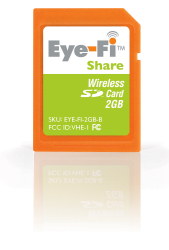
Qantas backs off from earlier plans, changes provider for in-flight broadband: The Sydney Morning Herald somewhat erratically and incompletely reports that Qantas has delayed and modified its in-flight broadband plans. Aeromobile was the provider when the service was tested in second quarter 2007, but OnAir is now described as the airline’s partner. This was noted by colleague Fabio Zambelli, who emailed me the news, and has his own account at 7BIT (in Italian).
OnAir has so far tested their calling/texting-only service on two aircraft—one operated by Air France, one by TAP Portugal—even though RyanAir announced plans that its planes would started being unwired with the service by late 2007. Still no word on that fleet progress.
Qantas will apparently launch cached Web browsing and limited Web email (probably through a proxy) along with instant messaging, with full Internet service coming “later in 2009.” This is clearly due to a lack of satellite coverage that was just remediated a few weeks ago (see below). The first plane with limited service, a new A380, should be in flight 20-October-2008.

I hate in-flightbroadband
To Qantas’ credit, note that each seat on the plane will have a laptop opower socket, a USB port, and a multimedia system that can show 100 movies and 500 TV show episodes, play the contents of 1,000 CDs and 20 radio stations, and offer 80 games.
The Morning Herald seems to overstate the importance and scope of a complaint filed by the union representing American Airlines’ flight attendants. The detailed coverage in the U.S. had more to do with the potential for issues, and likely attendants lack of interest in policing yet another media on the plane. Filtering doesn’t work, the attendants probably already know, and this may just be a negotiating point with the airline.
On why Qantas is waiting until late 2009? This requires unwinding how OnAir gets its signal.
Aeromobile and OnAir both rely on Inmarsat satellites for their service. Both companies had several years ago staked their futures on the fourth-generation network Inmarsat was to inaugurate with three satellites that would use beamforming to allow precise delivery of nearly 500 Kbps per receiver, with hundreds or thousands of regions being able to be targeted from a single satellite. Inmarsat’s third-gen network—don’t confuse this with 3G cellular ground-based networks—can deliver about 64 Kbps per channel.
Now, unfortunately, Inmarsat was three years late on launching its trans-Pacific bird. While the company claims 85 percent coverage of the earth and 98 percent coverage of population, there’s a big gap over the Pacific that also prevents them from having good overlap between the U.S. and Japan/China/Korea, as well as the southern Pacific, covering Australia. Since the biggest market for long-haul flights would likely be Australia, Japan, and China, traveling trans-Pacific or trans-hemispheric routes, that gap is rather large.
Aeromobile opted to build out a service, deployed only by Emirates airline as far as I can tell, that uses the 3G service since it was available, and most necessary equipment is already installed on most over-water planes. OnAir was waiting for 4G, which has necessitated a long wait, but allowed them to launch in Europe with a seemingly next-generation service. Given that OnAir is controlled by an airline-owned integration firm, SITA, and by Airbus, they’re not going anywhere.
Inmarsat finally lofted its third satellite on Baikonur Cosmodrome in Kazakhstan on 19-August-2008, and the launch and separation was reported as successful. Previously, the company has needed up to a year to verify and deploy its 4G satellites. (You can read extremely close coverage of the launch at a Web site devoted to space enthusiasm.)
However, the dirty little secret about Inmarsat’s BGAN is that it costs a fortune to heft bandwidth across it. Thus, in-flight broadband over BGAN, if it’s ever available, is going to be changed on an extremely high per-MB rate. None of the providers want to say this. This is in contrast to Row 44 (and, once, Connexion by Boeing), which relies on leased Ku-band transponders where they can fix costs and they require high volumes to keep per-bit costs efffectively low.
OnAir’s launch of calling on Air France’s service involves paying a few euros per minute for calls, which might help you understand what data costs could ultimately run.
Kanye Busted for Airport Bust-Up
(E! Online)Air Canada Goes GoGo








